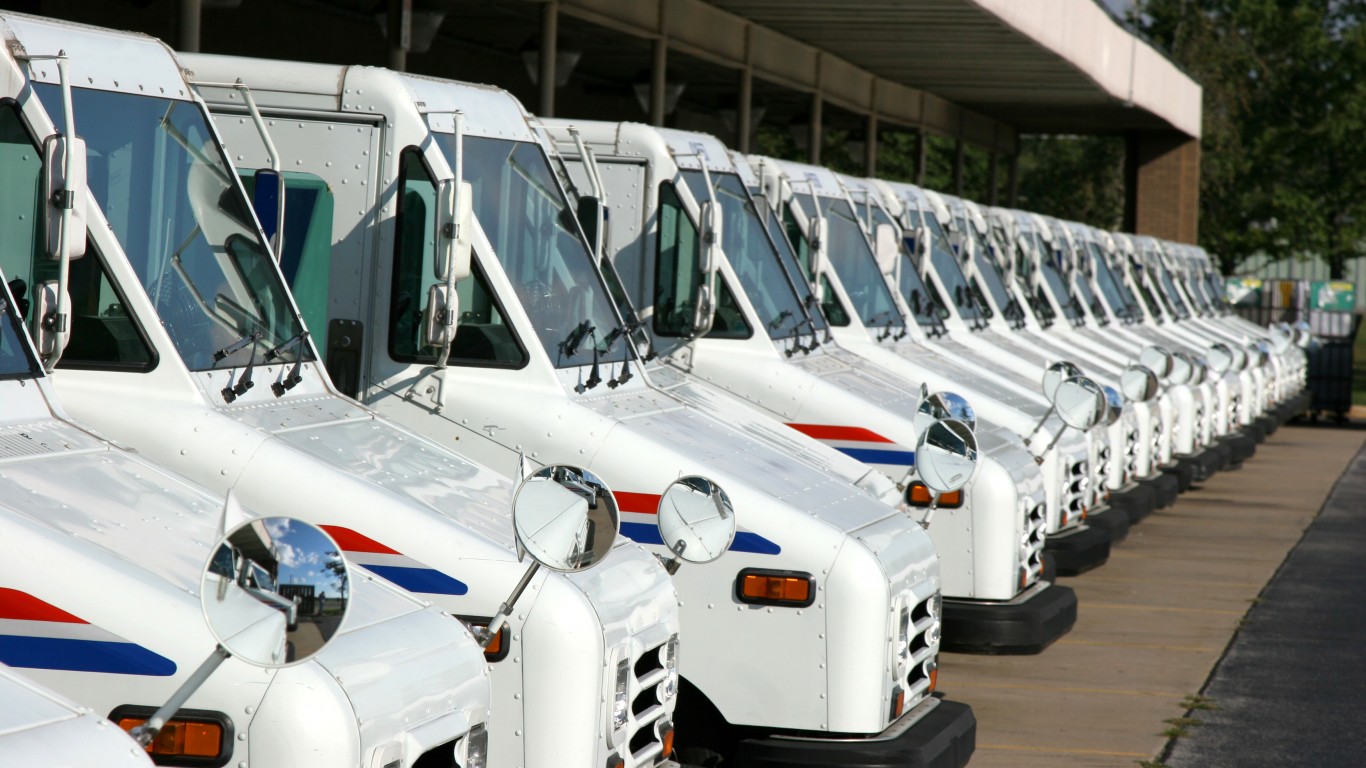Companies and Brands
Close the USPS and 31,000 Locations as It Becomes a Polluter

Published:

The U.S. Postal Service, which already has among the largest fossil fuel-powered vehicle fleets in America, has elected to buy new delivery trucks for $11.3 billion. Only 10% of these will be electric powered. The total number of new gasoline-powered trucks will total nearly 148,000, according to The Washington Post, which also reported that the decision was against the “Biden administration officials’ objections that the multibillion-dollar contract would undercut the nation’s climate goals.”
The new purchase will not improve fuel efficiency compared to the current USPS fleet of trucks. It will mean the postal system will be a major polluter for years to come.
Rivals FedEx and UPS already have begun to move toward electric-based fleets. FedEx recently bought 500 of these from General Motors. FedEx management said that it will buy nothing other than electric vehicles after 2025 and will have a fully electric fleet after 2040.
UPS has announced it has ordered 10,000 electric vehicles from U.K. manufacturer Arrival. UPS also made an investment in that company.
Additionally, the USPS, a thing of the past for several years, is slow, inefficient, poorly run and can be replaced by private enterprise. It has 31,000 offices, some of them in areas that have so few people that they do not get enough foot traffic to support them. It employs over 644,000 workers, over half a million of which have extremely high benefits, primarily negotiated by the American Postal Workers Union. The cost of these benefits alone, for both current and future retirees, is enough to swamp the USPS financially. The labor situation is similar to that of the car companies before GM and Chrysler went bankrupt in 2009.
Some of the 31,000 locations the USPS has could be sold and the money sent to the Treasury. Alternatively, UPS or FedEx could lease a number to use as service centers. The operating cost of each of these offices would be eliminated.
Closing the USPS would allow an end to the fiction that mail must be delivered six days a week. Daily mail delivery has almost no benefits. FedEx and UPS have extensive experience delivering mail periodically. Certainly, three deliveries a week would be adequate. It would be the financial responsibility of UPS and FedEx to do this without recourse to government money. There would be some cap on what they could charge businesses and individuals for mail, although that might be above current levels.
People nationwide have not been sufficiently encouraged to use email for correspondence and business documents. Although a huge amount of communication among Americans is done via email, the USPS had no reason to aggressively promote it as a low-cost option. The same is true with transactions that include payments, almost all of which can be done electronically, saving companies untold expenses and the public the cost of first-class stamps to send in checks.
Click here to see reasons to close the USPS, cutting 600,000 people and closing 31,000 offices.
Start by taking a quick retirement quiz from SmartAsset that will match you with up to 3 financial advisors that serve your area and beyond in 5 minutes, or less.
Each advisor has been vetted by SmartAsset and is held to a fiduciary standard to act in your best interests.
Here’s how it works:
1. Answer SmartAsset advisor match quiz
2. Review your pre-screened matches at your leisure. Check out the advisors’ profiles.
3. Speak with advisors at no cost to you. Have an introductory call on the phone or introduction in person and choose whom to work with in the future
Thank you for reading! Have some feedback for us?
Contact the 24/7 Wall St. editorial team.